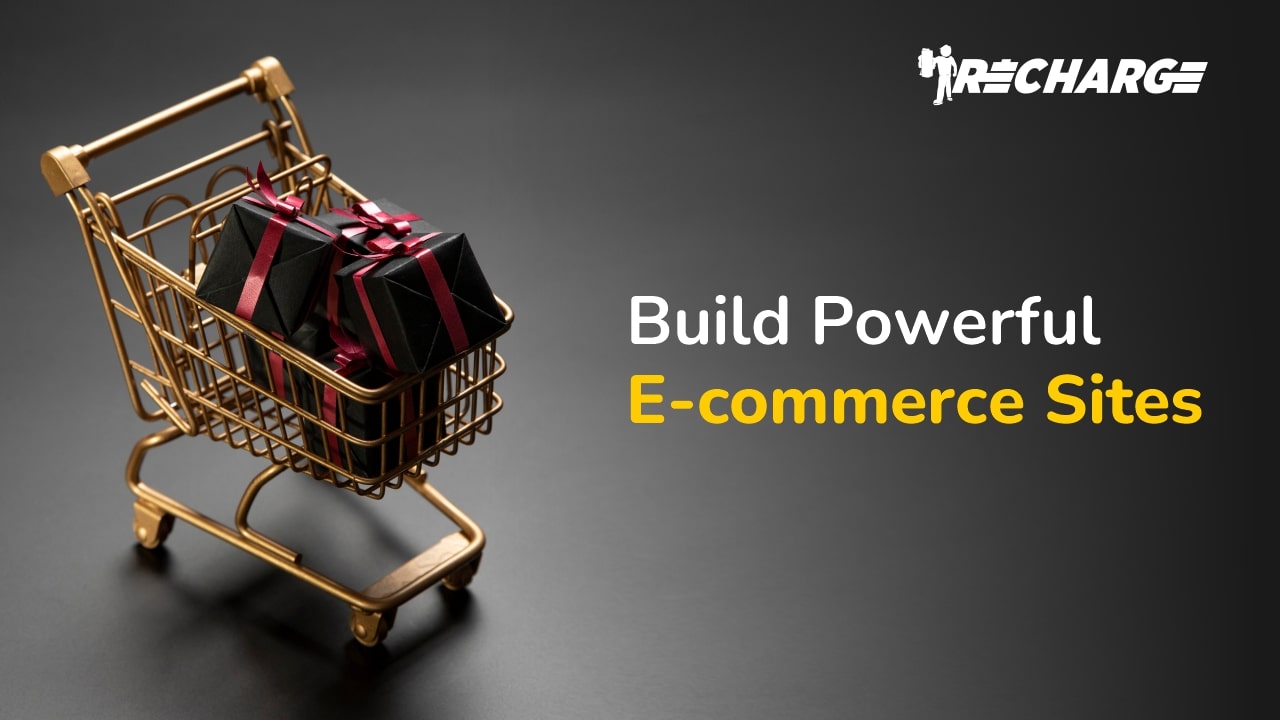E-commerce Development Trends to Watch

In today’s
fast-evolving digital market, e-commerce development has become a driving force
behind successful businesses. With technology advancing at an unprecedented
pace, understanding and embracing the latest trends in e-commerce is essential
for staying ahead. Let’s explore some game-changing trends that can shape
e-commerce and deliver a competitive edge to any business.
1.
AI-Powered Personalization
One of the most
influential trends shaping e-commerce is AI-powered personalization. Today’s
consumers expect tailored shopping experiences, and artificial intelligence is
making it easier than ever to deliver. From personalized product
recommendations to tailored marketing messages, AI helps brands connect with
customers more intimately. Machine learning algorithms analyze browsing
history, purchase patterns, and user behavior, allowing businesses to create
hyper-personalized experiences that increase engagement and loyalty. For
marketers, this technology offers not just an edge but a necessity in meeting
customer expectations effectively.
2. Voice
Commerce
As smart home
devices become household staples, voice commerce is emerging as a crucial
channel for shopping. Voice assistants like Amazon's Alexa, Google Assistant,
and Apple's Siri allow users to search and purchase products with simple voice
commands, streamlining the buying journey. For brands, optimizing content for
voice search—like focusing on conversational language and answering common
questions—is key to capitalizing on this trend. The rise of voice commerce
brings opportunities to reach consumers in new ways, particularly those seeking
convenience and hands-free solutions.
3.
Augmented Reality (AR) for Immersive Shopping
Augmented reality
has transformed the online shopping experience, especially for industries like
fashion, furniture, and cosmetics. AR enables customers to visualize products
in their real environment—such as seeing how a couch fits in their living room or
how a lipstick shade suits their complexion. This interactive experience not
only boosts engagement but also reduces return rates by helping customers make
more informed purchasing decisions. AR-powered shopping apps and websites are
capturing customer interest, making this a trend that savvy e-commerce
businesses can’t ignore.
4. Social
Commerce
Social media
platforms are no longer just a place for brand awareness—they’ve become direct
channels for sales. Social commerce, the integration of shopping experiences
within social media platforms, has opened doors to a new wave of e-commerce.
Platforms like Instagram, Facebook, and TikTok now offer shoppable posts,
allowing users to browse and purchase products without leaving the app. With
younger generations spending significant time on social media, tapping into
social commerce presents a highly effective way for businesses to increase
conversions while meeting customers where they already are.
5.
Sustainability and Ethical Shopping
Consumers today are
increasingly focused on sustainability, with many actively seeking brands that
demonstrate environmental responsibility. E-commerce companies that prioritize
eco-friendly packaging, carbon-neutral shipping options, and transparent sourcing
practices resonate well with modern shoppers. For brands, promoting
sustainability efforts can build trust and loyalty among environmentally
conscious consumers. From offering recyclable packaging to sourcing ethical
products, embracing sustainability is not just a trend—it’s becoming a standard
that businesses need to integrate into their operations to remain competitive.
6.
Subscription-Based Models
Subscription models
are proving to be a sustainable strategy for brands across various industries,
from beauty products and groceries to tech gadgets and apparel. By offering
customers the option to subscribe to regular deliveries of their favorite products,
businesses create a steady revenue stream while increasing customer retention.
Subscription-based e-commerce also allows for continuous engagement with
customers and fosters brand loyalty. With growing demand for convenience,
personalized subscriptions offer businesses a way to lock in repeat buyers and
cultivate long-term relationships.
7.
Enhanced Mobile Experience
With over half of
e-commerce sales occurring on mobile devices, ensuring a seamless mobile
experience is essential. Responsive design, one-click checkout, and
mobile-friendly payment options are just a few areas where brands can improve
the mobile experience. Progressive web apps (PWAs) are also gaining traction,
as they provide fast loading speeds, offline functionality, and an app-like
experience without requiring users to download an app. As mobile shopping
continues to rise, businesses that optimize for mobile will have a distinct
advantage.
8.
Blockchain for Transparent Transactions
Blockchain
technology has extended beyond cryptocurrency and is now finding its way into
e-commerce. By enabling secure, transparent, and decentralized transactions,
blockchain helps build consumer trust, especially for high-value purchases.
Smart contracts, for instance, can streamline payments and automatically
enforce agreements, reducing the chances of fraud. For companies focused on
enhancing transparency, using blockchain in areas like supply chain tracking or
customer loyalty programs can offer unique benefits that enhance consumer
confidence.
9. The
Rise of Omnichannel Shopping
Today’s consumers
engage with brands across multiple channels, from online stores and social
media to physical locations. Omnichannel shopping integrates these touchpoints
into a cohesive experience, allowing customers to transition seamlessly from
one channel to another. For instance, a customer might research a product on a
mobile app, test it in-store, and make the final purchase online. Brands that
adopt an omnichannel approach not only improve customer satisfaction but also
boost conversion rates, as they provide flexibility and convenience to
customers on their preferred platforms.
10. Data
Privacy and Security
With the rise of
personalized shopping experiences comes a greater need for robust data
security. Consumers are more conscious than ever about data privacy, and brands
must prioritize secure transactions and transparent data handling practices to
build trust. Compliance with regulations like GDPR and CCPA is essential, but
businesses can also take extra steps by implementing strong encryption,
multi-factor authentication, and secure payment gateways. In an age where data
breaches can seriously damage brand reputation, investing in cybersecurity is
both a best practice and a necessity for e-commerce success.
Conclusion
E-commerce
development is constantly evolving, and staying updated on emerging trends can
empower businesses to make informed decisions. From AI personalization to voice
commerce, and blockchain to sustainability, these trends are transforming how
brands engage with customers and how customers shop online. By strategically
adopting these trends, businesses can offer enhanced experiences that not only
meet but exceed customer expectations, securing their place in the future of
e-commerce.
Recharge Trend Setter is a leading advertising agency
in India that can help you grow your business and reach your target audience.
We offer a wide range of services, such as branding, marketing, advertising,
event management, AV production and all kinds of IT services. We have a team of
experts who are passionate about their work and deliver results that exceed
your expectations. We have worked with some of the most reputed brands in India
and abroad. If you want to take your business to the next level with Recharge Trend
Setter, don’t hesitate to contact us today. Recharge Trend Setter is the
ultimate partner for your brand success.
Book a meeting with our team now and get ready to recharge your brand!
Read Also: How
to Build a Winning Email Marketing Strategy
#ecommercedevelopment,#ecommerce,#development














